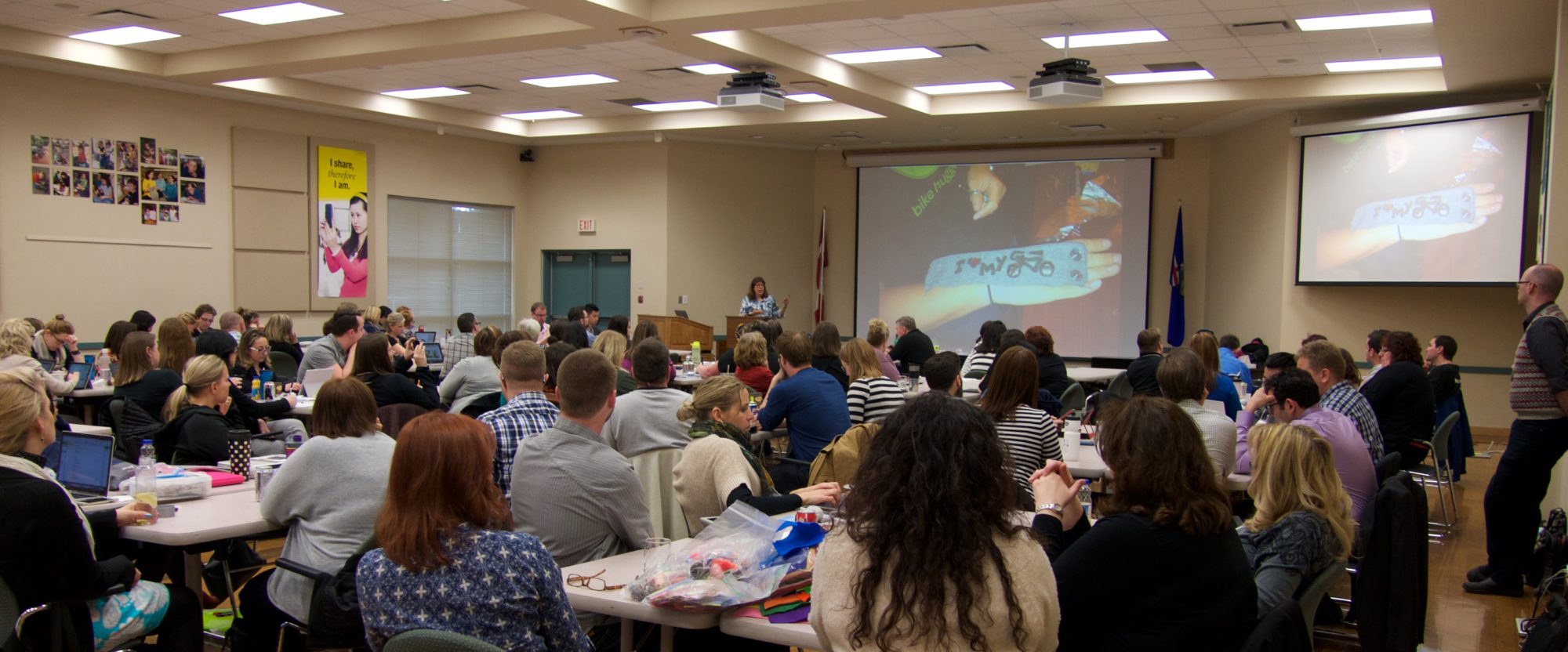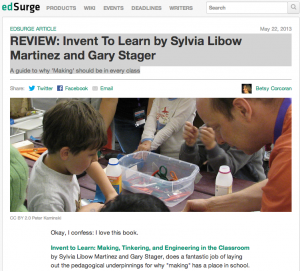Start the year off with hands on!
Think you need to wait for kids to settle down and learn the basics before you let them do projects and hands-on work? Not according to this expert teacher.
Making the Case for “Making” in the Classroom
Check out my new book – Invent To Learn: Making, Tinkering, and Engineering in the Classroom. Educators can use the tools, technology, and “can-do” attitude of the global maker revolution to revitalize learner-centered education. A teacher PD book club read, perhaps?
Marketing your tech vision. What message will you share?
What message does your Acceptable Use Policy send when it goes home with students for them and their parents to sign? This year, change overly complex, negative language to language that celebrates the potential of technology – and students.
Games for collaboration and teamwork
Want to create a more collaborative, constructivist classroom? Instead of traditional icebreakers, try these games that encourage collaboration and teamwork.
What do students want from teachers?
Listen to what students say they really want from teachers. And no, it’s not “more recess.”
Student technology leadership teams for laptop and BYOT schools
Are you getting more devices this year? Laptops, iPads, iTouches, netbooks or going 1:1? Do you have enough tech support? Enough support for teachers using new technology? Enough support for students? No? Well then learn how students can be a great resource when to ease the burden on overworked teachers and IT staff – and mentor other students. Student run “Genius Bar”, anyone?
Ten commandments of tech support
Ten ideas for making technology support more learner-centered and less network-centered.
8 Big Ideas of the Constructionist Learning Lab
Last but by far not least, if you are looking for some inspiration to post on your wall, here are 8 Big Ideas of the Constructionist Learning Lab. These eight ideas give actionable advice to create opportunities for deep learning for all. (Also in Spanish)
Happy back to school! MAKE it a great one!
Sylvia





 Download the workshop kit from Invent To Learn. This includes a poster of the TMI Robot (Think-Make-Improve) and handouts for our one-day Invent To Learn workshop.
Download the workshop kit from Invent To Learn. This includes a poster of the TMI Robot (Think-Make-Improve) and handouts for our one-day Invent To Learn workshop.